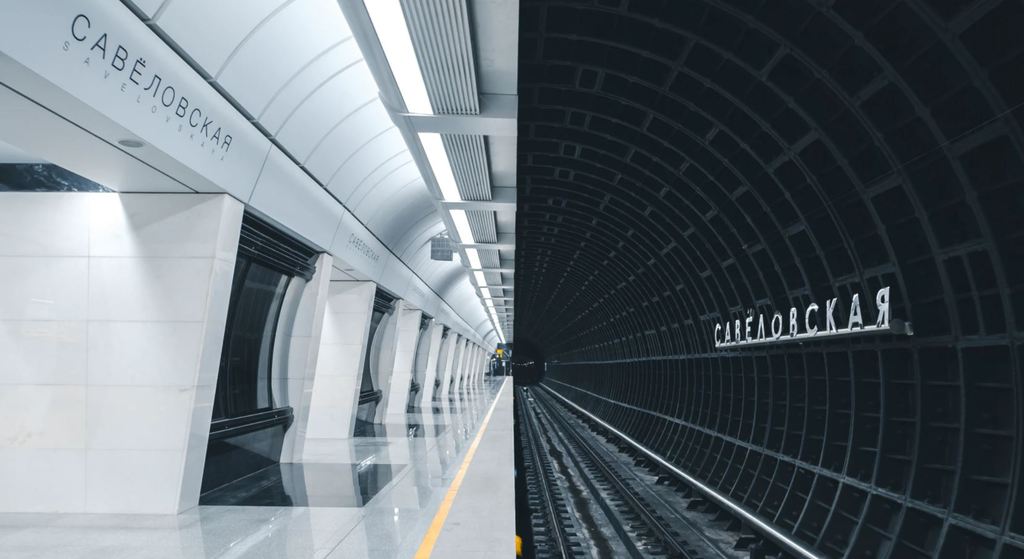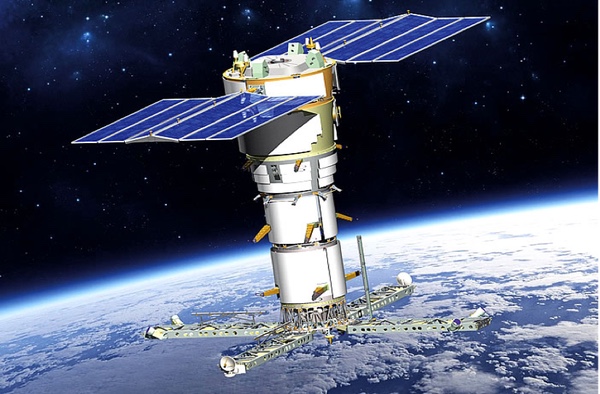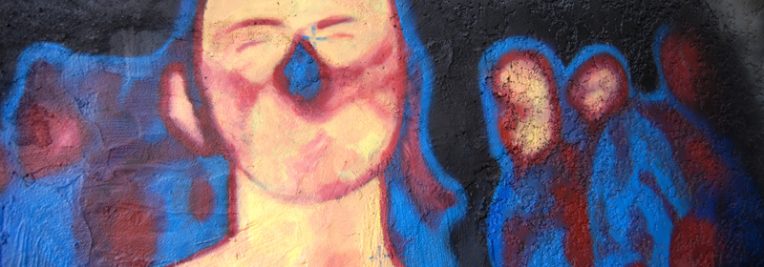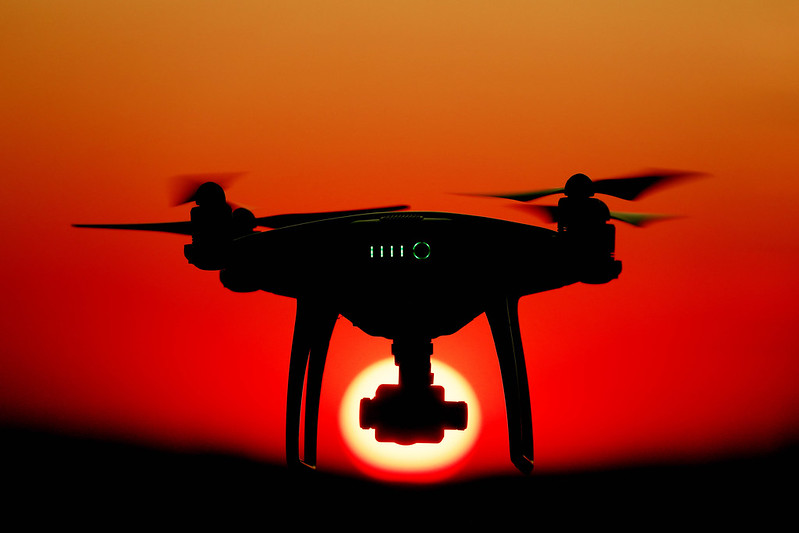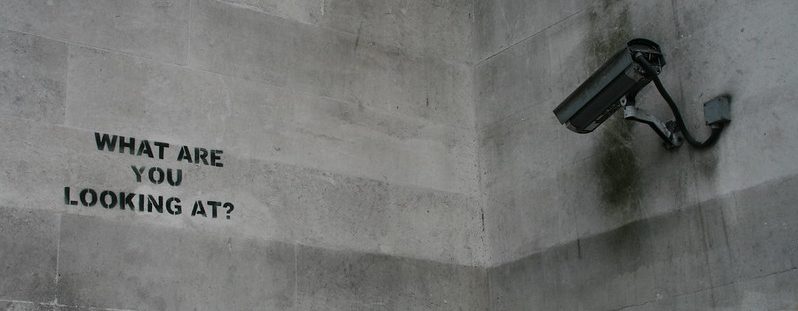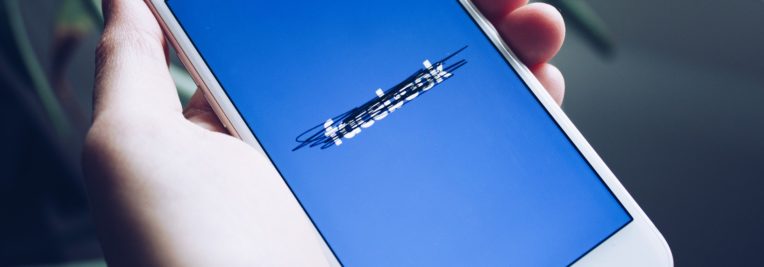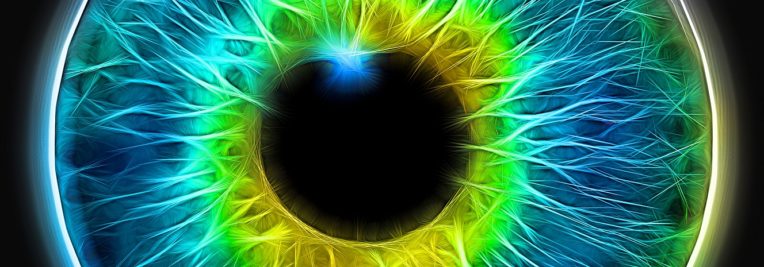The COVID-19 pandemic is an unprecedented public health crisis highlighting many of the gaps in modern society that are unable to cope with ‘black swan’ events. Fortunately, people are also realising that many of the professions we take for granted (from nurses to garbage collectors) are vital parts of a functioning society and deserve greater respect than they have been given in the past.
As discussed previously on this site, it has also become clear that governments around the world are using this crisis as justification to erode civil liberties and extend their power. There is no better example of this then the issue of mass surveillance of citizens, which is why this fifth installment in the World War Privacy series will give an overview of the different forms of surveillance that we are now facing because of the COVID-19 pandemic.
From the outset it needs to be noted that, worryingly, there are an increasing number of articles published that are outright telling readers that we should accept surveillance and get over the idea that we can maintain privacy in the face of this new threat. These are usually associated with government-connected think tanks that should be taken as the propaganda that they are.
Surveying the COVID-19 surveillance landscape paints a depressing picture. Early reports have catalogued over 30 different countries that are implementing additional citizen surveillance at this time, with some commentators saying that we face a trilemma (pick two) between: limiting deaths, releasing lockdown, and maintaining civil liberties.
The forms of surveillance emerging during the COVID-19 pandemic are going to define, in large part, how our society develops in the 21st century. It is therefore vital that we all have a thorough understanding of the methods being used and consider what’s at stake when we’re told to give up our privacy during this time of crisis.
Location Tracking
Following widespread outrage over the Spring Break parties that took place in Florida, two data analytics companies co-published a video tracking anonymised mobile devices that were active at Fr. Lauderdale beach and showed how these individuals then moved across the country. This data was repurposed from users who had installed weather and traffic apps, showing how malleable the use of our smartphone data is and the lack of consent sought for its use beyond the initial apps installed.
There are plenty of other examples. Spain has announced the DataCovid project that will track the locations of 40 million smartphones, while also developing an app that uses geolocation data to send warning messages to people breaching lockdown protocols. Hong Kong went further by mandating geofencing wristbands that must be worn, along with the use of the associated StayHomeSafe app, by everyone entering the country to ensure that they remain isolated for 14 days after arrival.
In a more benign way, South Korea implemented location-based texting that is seen by many as overactive and annoying; but they also have a mandatory location tracking app for those ordered to self-isolate. Israel, on the other hand, has used the pandemic to bring out their vast network of surveillance tools, legitimising the use of identity-linked location tracking to target forced quarantines; alongside heavy fines and increased police powers to punish those who break them.
These examples, among many others, are announced as a legitimate form of data analytics to help model the spread of the virus, ensure adherence to self-isolation rules and protect the public. They are rarely discussed as forms of mass and indiscriminate surveillance, but rather as an effective way of tracking the virus to help overcome a public health crisis.
Despite the official narratives, though, there is widespread understanding that location tracking is a powerful tool (particularly when linked with personal information) and we should be concerned about its normalisation and expanded use.
Contact Tracing
Taking location tracking one step further in what is perhaps the most widely discussed form of COVID-19 surveillance, contact tracing can be an important part of containing a viral outbreak. However, the problem starts when governments push for new tools of automated surveillance that provide data to be mined and analysed on citizen populations without any transparency or oversight.
Specialised apps are being produced and then installed (whether voluntarily or not) to track our locations, monitor proximity with other people who might have been infected, and contact people with government instructions. In this way, contact tracing takes location tracking further down the road of deanonymisation and, in numerous instances, links our location data with other easily identifiable personal information that our smartphones contain.
Contact tracing through smartphones comes in different forms, some significantly better for privacy than others. The recently announced collaboration between Google and Apple is key here, as combined they control the majority of the market. Early indications showed a decentralised, privacy-conscious approach to contact tracing; but we have already seen direct requests from governments such as France to roll-back many of the announced privacy protections. There has also been pushback in the UK, including the bizarre notion that smartphone screens should always be on in order for the tracing app to function properly.
Other countries will inevitably follow in a co-ordinated push to try and force compliance with government requests. There are plenty of questions to be considered about who owns the data, international consistency and how any contact tracing data is shared (if it should be shared at all). If you travel, should your data travel with you to the next, potentially more authoritarian government? Who will regulate use and ensure proper oversight? Is the determination that will change your ability to move and associate freely be automated or based on human decision?
Automated contact tracing via smartphones will be implemented as pressure to ease lockdowns increases, with branding such as Pan-European Privacy-Preserving Proximity Tracing (PEPP-PT), the Isolation Tracking Project (ITP), TraceTogether or COVIDSafe.
There are also examples of companies that have already taken contact tracing into their own hands, such as Uber that suspended the accounts of hundreds of passengers in Mexico after they had taken rides associated with an individual who later tested positive.
China, of course, took the early lead with their colour-coded system that drastically limits the movement and forces quarantine on citizens that might have been in contact with people who had been infected. How this is ascertained is not transparent and therefore easily abused.
Israel is another example that has been quickly pushed through without adequate oversight and, worryingly, given into the hands of intelligence agencies who then pass on their findings to public health officials and police forces.
Russia has taken a similarly rapid and highly invasive approach to citizen surveillance centred on contact tracing, without much public debate or any attempt to curtail such activity.
As more governments around the world begin to roll out automated contact tracing systems, it is vitally important that we don’t accept permanent backdoors and other privacy loopholes in our technology that become a permanent fixture in our lives. Thankfully, contact tracing is the area of COVID-19 surveillance currently seeing the most scrutiny and debate. An open letter signed by 300+ academics from around the world is a hopeful indicator that we won’t easily give up on this front.
There are ways to use technology for contact tracing and ensure that civil liberties aren’t curtailed; but unfortunately it is looking increasingly unlikely that many of these safeguards will be overlooked, whether consciously or because of the rapid deployment timeframe currently faced.
Surveillance Drones
Video surveillance using CCTV has become a common experience in our daily lives, particularly in larger cities (there are currently more than 600,000 CCTV cameras in operation in London: 1 for every 14 people). When it comes to COVID-19 we are seeing video surveillance taken even further, with wider use of new technologies such as facial recognition and repurposed drones.
Drone surveillance has been seen in multiple countries, including China, USA, Israel, India, Spain and the UK. There have even been reports of drones using thermal imaging to monitor people’s temperatures in Saudi Arabia.
It’s interesting to consider that an early video of surveillance drones that came out of China was dismissed by many online as fake. How quickly things can change, as two months later this kind of surveillance seems commonplace and almost expected.
Going beyond the dystopian visions of science fiction that surveillance drones represent, what is particularly concerning is that they are often used as a form of public humiliation. We’ve seen examples of surveillance humiliation through the use of ‘shout drones’ that yell at people to comply, chiding them like children, or aerial footage of hikers in isolated nature reserves that make the national news. This combination of invasive surveillance and intimidating humiliation highlights the fact that drones are being used in increasingly authoritarian ways. Police departments around the world are seemingly jumping at the chance to roll out the technology, using the COVID-19 pandemic as the perfect justification to do so.
Thankfully there has been significant public backlash to the ‘shaming videos’, but ultimately this is a show of force from state institutions that want to bully people into submission. When surveillance is used as a shaming tactic, it is clear evidence that it has gone beyond protecting the safety of communities and is being used more purposefully as an active means of control.
The use of drones as a form of vocal and humiliating surveillance is a warning sign that police departments and governments increasingly see citizens as the enemy. We began seeing their use to monitor protest movements, particularly more disruptive ones involving mass mobilisation of citizens.
Activists also use drones as a form of counter-surveillance on heavy-handed police tactics, which came to mainstream attention during the Occupy movement in 2011. These kinds of efforts in turn led to calls from conservative think tanks to further progress the drone arms race and enhance the government’s counter-drone operations.
Using COVID-19 as justification, surveillance drones are now being used against individual citizens and deployed in the most basic of public spaces such as markets, parks and town squares. When the notion of public space becomes heavily controlled and monitored, it is not owned by the public themselves but rather permission is granted by the state for its use. When this takes place, as it is right now, then we need to be aware that basic civil liberties such as freedom of movement and association are being removed.
Facial Recognition
Another technology increasingly used around the world, facial recognition started with significant pushback but is now being rolled out quickly in the wake of COVID-19. Despite widespread criticism from civil rights groups and even local politicians, there seems to be no stopping the march towards combining CCTV with facial recognition software that will flag suspicious behaviour and persons to the authorities on a real-time basis.
From the early days of the pandemic, we saw the use of facial recognition software. Police in Moscow announced in mid-March that they had used facial recognition to catch more than 200 people who had broken self-isolation measures. The intense restrictions seen in China combine numerous forms of digital surveillance to control the movements of citizens, including the use of facial recognition to identify people who aren’t wearing face masks in public.
It’s not just governments that are using facial recognition technology in this way, we’re also seeing corporations tracking movements of individual workers in the workplace. Amazon, often a source of concern around worker rights, has implemented a particularly dystopian set of processes including machine-learning cameras to track social distancing in their buildings.
The problem with using facial recognition as a form of surveillance is multifaceted. Not only does it communicate an inherent distrust of the public, who are indiscriminately treated as potential threats that need to be monitored and tagged, but it is also built upon algorithmic foundations that often amplify the biases of their creators and data sets. We perceive these forms of artificial intelligence and machine learning as if they are some kind of objective, pure vision. Instead they are a facade of objectivity hiding their abstraction behind opaque technology.
We rarely see the algorithms that are driving this particularly invasive form of surveillance, which means that we should question its use in dictating what does or doesn’t constitute guilty behaviour. This is the deeper issue of automated recognition systems, but we should also be strongly critical of the de-anonymising effect they have when combined with our smartphone data and other identifying elements in the wake of the COVID-19 pandemic.
Medical Records
One of the other privacy casualties of ‘anonymised data’ are our medical records. Different US-UK partnerships between tech firms and governments have emerged that are utilising citizen medical data for the purposes of outbreak modelling and the development of real-time data analytics tools. The manner in which data was allegedly shared and used in this particular example, including large volumes of identifiable data, has raised serious ethical concerns and accusations of lax data protection standards.
There are, of course, legitimate uses of medical data that can be used to help track the pandemic. The aggregated temperature map from Kinsa, using aggregated data from their product customers, has proven itself to be a useful foresight tool. Even in this instance, though, Kinsa has been forthright about the fact that they sell this data to third-parties. This includes advertisers that can then target certain postcodes based on symptom trends, even though they also state that they don’t attach the data to names or email addresses.
Despite the positive use cases, the incremental expansion of medical surveillance accelerated by the COVID-19 pandemic will ultimately end up handing excessive power to governments. Inevitably, whether today, next year or a decade from now, this power will be used to discriminate against individuals based on medical profiles. There are clear examples of this in action already, such as the previously mentioned colour-coded system in China that dictates the autonomy of individuals down to the degree of being able to use public transport, enter buildings or travel between cities.
Early suggestions of an ‘immunity passport’ by governments around the world seems to mimic this idea. In an encouraging move, the World Health Organisation has recently come out warning against the concept, on the basis that it won’t actually be an effective tool to stop the spread of the virus. Not only is the idea of an immunity passport based on antibody testing an ineffective method, but requiring medical certificates of any kind in order to move freely in society is an authoritarian approach that should never be celebrated.
Like with many things that will emerge during this pandemic, the question has to be: how could this be used negatively in the future? If we don’t build in safeguards against those negative outcomes, then we are sacrificing our freedom in the future for the comfort of safety now.
Once medical surveillance and profiling becomes the norm, it will progressively become part of the fabric of our public lives in a way that many would deem unacceptable but at that point would be irreversible. Should we ban travellers with other communicable diseases, such as HIV-AIDS? Should your entire medical profile be made accessible to insurers, employers or perhaps even political organisations? These are just a few examples that are over the horizon if we accept what is currently being suggested when we look to how medical surveillance might be used to help combat the COVID-19 pandemic.
Citizen Reporting
The items above are mostly technological approaches actively pushing the boundaries of mass surveillance in our lives, but it is this last category that is perhaps the more sinister and concerning. When governments are able to turn citizens against one another, stoking the flames of judgement and paranoia, then we are rapidly approaching the dystopian future depicted in science fiction and experienced by many in the totalitarian nightmares they have lived through in the past.
Here in the UK, the citizen reporting ethos entered the public sphere in what could be seen as an acceptable manner. “See something, say something” morphed into the new “See it. Say it. Sorted.” campaign widely advertised on public transport and spoken over PA systems, leading many people to report abandoned backpacks or empty McDonald’s bags filled with trash.
Maybe this approach, particularly when focused on inanimate objects, is an acceptable one to take. By creating a sense of collective responsibility and collaboration with police forces, we might even be able to forego some of the more invasive technology such as facial recognition systems. However, there are two key issues with encouraging citizens to be tools of state surveillance.
The first is that human beings are highly fallible, particularly when we are in a state of heightened anxiety. This not only leads to false reporting, but also to a growing animosity between neighbours and peers in society. Consider the recent story of the frontline nurse who was reported by a neighbour and received a scathing note attacking her for leaving the house each day. There are also reports of vigilantism starting to emerge, with angry residents blocking roads and confronting cyclists.
The second issue, closely related to the first, is that encouraging citizen reporting quickly erodes the bonds of trust within local communities. We begin to see others as infected enemies; not only causing damage to any shared sense of community, but also negatively impacting the mental health of individuals prone to suspicion, paranoia or more serious behavioural issues.
Like with many elements of the surveillance society, there are a growing number of people who have been convinced these changes are necessary to ensure their safety in a dangerous world. We have already lived through multiple decades of different types of enemies to justify these actions; from the more distant geopolitical threats of the past, to violent terrorists and lone wolf murderers. This sense of constant threat has slowly shifted us towards what we see now: a large percentage of the population readily and proudly reporting on one another.
The fact that citizens are being encouraged to call reporting hotlines is deeply authoritarian in nature and a surreal experience to see people proudly proclaiming themselves as good citizens on social media for reporting on others. Social distancing and lockdowns are an important and effective response to a viral pandemic, but reporting on your neighbours for stepping outside too often is setting the bar so low that it begins to tear about the fabric of a social, communitarian society.
Conclusion
The world must respond to the COVID-19 pandemic seriously, which requires the kind of personal and economic lockdowns that have been implemented. However, we should be concerned with how easily and quickly this crisis has been used to further the mass surveillance of citizens and erosion of privacy by governments around the world.
The UK government, for example, is continuing to push for more surveillance powers during this pandemic that aren’t even related to COVID-19; expanding the range of organisations allowed to obtain communications data under the Investigatory Powers Act. Given that these moves towards legislating for mass surveillance of citizens marches onwards, why should we expect that they won’t use the threat of COVID-19 to achieve the same goals?
These might be exceptional times, but they do not require the extremely invasive surveillance powers that governments are currently mandating. We know there are safer and more privacy-centred alternatives (including truly aggregated data such as sewerage analysis), so it’s important to push back on the authoritarian rhetoric being heard.
Without decentralisation of technology, sunset clauses on legislation, and independent oversight of government initiatives, the extension of surveillance powers currently being implemented will provide a greater ability for authoritarian governments of all kinds (present or future) to coerce, oppress and forcefully discriminate against citizens they do not approve of.
Authoritarianism isn’t just founded through force, but often takes root through persuasion. History has shown us that convincing people it is in their best interest to give up freedom for safety and security, particularly with the threat of an ‘invisible enemy’, is one of the quickest paths to totalitarianism with disastrous effect. We are currently witnessing the repackaging of mass surveillance as a public health crisis and this narrative needs to be rejected.
When faced with an ambiguous enemy, governments use justifications of security to grab power and extend the state’s ability to stifle dissent and oppress alternatives. The enhanced technological capabilities that come with mass surveillance can then be used by governments to discriminate against certain people, groups or even entire populations they consider to be undesirable.
We’ve already seen this take place aggressively with both the ‘War on Drugs’ and the ‘War on Terror’. Let’s not allow the ‘War on COVID-19’ to become the next rallying call for the state to increase their power and remove our civil liberties.
The threat we currently face is not only invisible, but lives within our own bodies. If we allow governments to have ultimate power in order to suppress such an enemy, then it will by definition be used against ourselves as well.
Read other parts of the World War Privacy series here:
USA / UK / Five Eyes / China
Header Image by Thierry Ehrmann, Creative Commons


